Gypsy moths hatching
Gypsy moth egg masses started hatching on April 27th. Eggs were still hatching as of May 3rd. I expect it takes at least a week for all eggs to hatch. Once eggs hatch, caterpillars may remain on the mass several days before dispersing. Gypsy moth caterpillars disperse by ballooning – sending out a silken thread and then carried by a breeze. It may take several days for caterpillars to find a suitable host. Small caterpillars will feed on oaks, aspen, apple, blueberry, speckled alder, basswood, gray and river birch, and willow. Less desired but still attacked are maple, black, yellow, and paper birch, cherry, cottonwood, elm, black gum, hickory, hornbeam, larch and sassafras. This list of plants is from the excellent, new, RI DEM gypsy moth website at http://dem.ri.gov/programs/forestry/gypsy-moths/
Once caterpillars are over an inch long they can feed on pines, spruce, and hemlock.
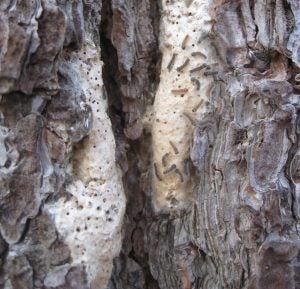
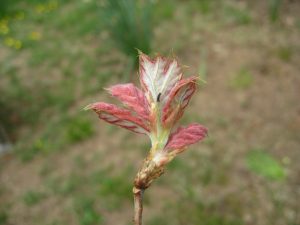
Hatching gypsy moths. Newly hatched gypsy moth on oak.
If you intend to spray for gypsy moths we recommend using a Bt insecticide such as DiPel or Thuricide applied after eggs hatch and caterpillars disperse, but before caterpillars develop into large caterpillars. The best time frame for this application is probably the second through third week of May. The fourth week of May might also be fine as long as caterpillars haven’t grown larger than 1 inch long by then.
Many people have asked about setting up tree wraps to capture gypsy moth caterpillars. This might help if tree wraps are set up on a sprayed tree after spraying. This might prevent large caterpillars from marching up your sprayed tree once caterpillars have defoliated whichever tree they were feeding on. Gypsy moth caterpillars do not tend to climb up and down trees each day when there is a large population of gypsy moths. When the population is large, most caterpillars stay up in the trees eating 24/7.
Winter moths. I don’t understand what is going on with winter moths, but I see very few this spring. Perhaps my view will change as winter moth caterpillars grow larger. This is confusing, but good news!
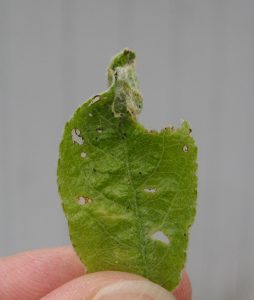
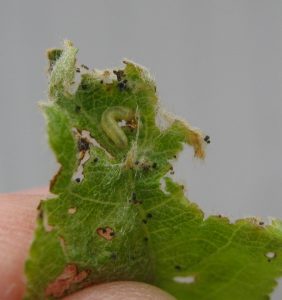
Winter moth caterpillar inside folded leaf and then leaf unfolded.
Forest tent caterpillars are much more difficult to spot than gypsy moths. Forest tent caterpillars started hatching April 14 and are still pretty small. I see a lot of forest tent caterpillars near my house in Charlestown, but I don’t know about other locations. Eastern tent caterpillars, on the other hand, are very easy to see now. Eastern tent caterpillars appear to be having another big year. Eastern tent caterpillars feed on only a few plant species so are not forest defoliators. Forest tent caterpillars can also be controlled with Bt. Eastern tent caterpillars can be controlled by ripping open or removing their tents.
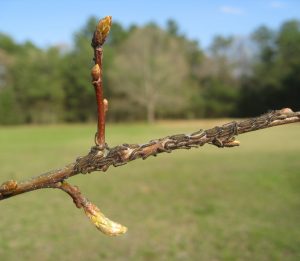
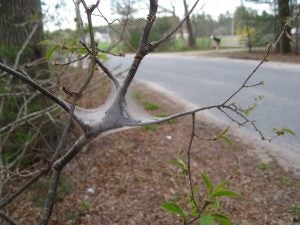
Forest tent caterpillar on oak twig. Eastern tent caterpillar on black cherry.
 Home
Home Browse
Browse Close
Close Events
Events Maps
Maps Email
Email Brightspace
Brightspace eCampus
eCampus


